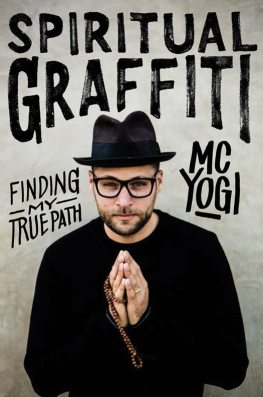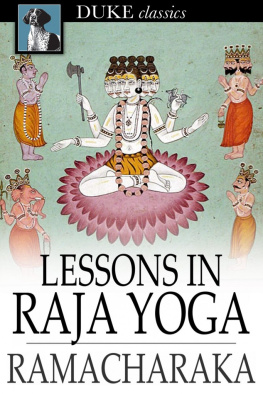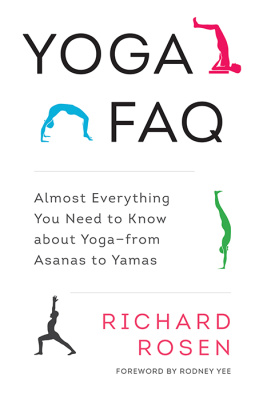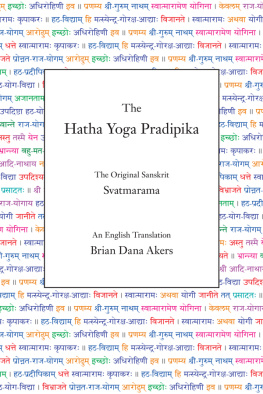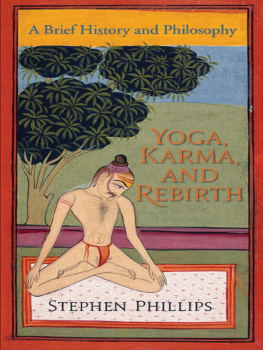Table of Contents
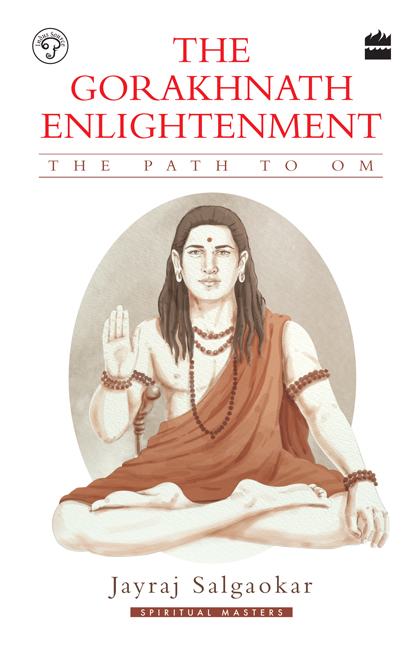

Shree Gorakhnath
An Artist's Imagination
SPIRITUAL MASTERS
THE GORAKHNATH
ENLIGHTENMENT
The Path to OM

Yoga & Tantra,
Buddha & Siddha,
Shakti & Tara
Jayraj Salgaokar

Dedicated to the memory of
Smt. Durga Bhagwat, Shri Dharamvir Bharati,
& Yogacharya B.K.S. Iyyengar,
all of whom were the initial inspirations for this book.

Contents

Disclaimer
This book attempts to trace the intimate connections between the esoteric origins and the paths of Hatha Yoga and Buddhist Tantra, and tries to make it more accessible and easy-to-read for the general public. It is an amalgam and a concise compilation of the expert works of various authors. It gives an overview of the different gods and goddesses, masters and students, and schools and philosophies that define their constitution and essence. However, for those seeking more expert and detailed literature, the books and reference material mentioned in the bibliography are highly recommended.
This book is a research work with reference to, and relying upon the contents of, a variety of folklore and folk stories. Any attempt on the part of any reader to connect this material to personal life, or to use it for any experiments without proper guidance of an expert in the respective field, will be at the risk and cost of such reader.

O m. The first sound of the universe. The sound that marks the beginning of all time and of all creation. It defines the eternal cosmic truth as it is said that this sound awakens our spirit to live in love and light and experience a never-ending bliss. It is for this reason that this word is the first syllable of every religious mantra and sacred chant.
Om filled up the space of darkness that was our world. Gradually, as the word grew stronger like a heartbeat, the whole universe turned into a mighty ocean with strong currents that flowed passionately. From them arose a golden glowing egg called the Hiranyagarbha (Golden womb). This eggshell contained Brahmathe Creator of the Universe who divided the shell into Prithvi (earth) and the Swarga (the heavens), and filled it with air to keep it apart. He added high mountains, great rivers, and drew six elements of sight, smell, touch, taste, hearing, and thought from himself and combined them to create all living beingshumans, animals, fishes, birds, insects and filled the cosmos with pure pulsating life that could procreate.
From that moment till today, our world has undergone a massive metamorphosis. We are no longer defined by divine essence but by materialism, our achievements, social standing in society, caste, class and financial status. These, in turn, have built up our egos, pride or ahankar, and delusions of grandeur. We are beings who have forgotten our divinity, our purity, our source and our goal which is to merge with the Parmatma, and return to Om.
Om is the sound of being and nothingness. But chanting Om is not the only way we can reach our true potential or complete our spiritual self. It is a long process that requires discipline and a defined path of self-realisation. This path is called yoga, the path that helps the practitioner to attain the highest goal called moksha or nirvanaeternal freedom from the cycles of birth and death.
Mysticism and yoga are among the many gifts that the rich cultural land of India has given to the world. Life-changing and beneficial to all spheres of life, the practice of yoga has reached the length and breadth of the planet. People around the globe have made Sanskrit chants of Om and the daily practice of yogic asanas (postures) an integral part of their lifestyle and spiritualism. It is beyond any religion or cult. It is universal.
The word yogi defines someone who has chosen to part with the material world and all its material pleasures and attachments. He looks to gain spiritual fulfilment, to blend body and mind with the soul, and finally achieve a union of the soul with the Brahman or Parmatma, the Final Truth. (This is according to one of the philosophical systems called Vedanta. There are many other traditions where the concept of the final truth differs from Vedanta).
While yoga is accessible to all, the path to become a true yogi is known only to a few. An esoteric practice, it requires years of learning, dedication, willpower, and thirst for the connection with the universal consciousness and spiritual marriage with the Divine. Only those who seek this path with complete sincerity and patience are truly successful, but only to some extent. When they finally reach there they realise that they are the Brahman.
This mystic science owes everything to two esoteric cultsthe Siddhas and the Buddhas. While the Siddhas originated on Indian soil and the Buddhas are deeply established in India and Nepal, the philosophies, paths and deities of these two cults are intimately connected. (The Siddhas belong to the Hindu as well as the Buddhist Tantric traditions. The two should not be equated. According to the Buddhist tradition, the Siddhas aim at becoming the Buddha. There are male and female Siddhasyogis and yoginisin the Buddhist tradition, having the same goal and capability.)
Pious and passionate, a blend of these two paths can escalate an individuals consciousness and help him/her realise his/her complete potential. Many names, forms and legends portray the gods and goddesses of these cults in myriad ways across centuries since antiquity. From Adinath to Matsyendranath each section explores the anomalies and similarities of these two cults bound together by the heterogeneous spiritual thread of Gorakhnath.
Born in different centuries, in different castes and countries, people worship the Siddhas from Adinath to Matsyendranath. Reincarnated in different forms across centuries, these deities and their teachings give mortals respite from suffering and samsara and show them the right direction towards their spiritual path where there is only bliss and peace. This book attempts to outline this journey that will ultimately help us return to our true nature, of purity, innocence, and simplicity.
Yoga masters call this state Sahaj (simple, natural, sahajyana). Buddhists call it Voidness or Shunya (zero). Osho calls it No-mind. Gorakhnath calls it Death of the ego... Finally it all merges into a single sound... Om.... Om.... Om.
~ Deesha Kriplani

I have gone through the manuscript of the proposed book The Gorakhnath Enlightenment, by Shri Jayraj Salgaokar. The book consists of three parts: Part 1: Yogic and Tantric Gods and Goddesses, Part 2: Gorakhnath: The Thread that Binds Shaivism and Vajrayana Buddhism, and Part 3: The Siddhas and the Buddhist Tradition. The purpose of the book as the disclaimer says, is to trace the intimate connections between the esoteric origins and paths of Hatha Yoga and Buddhist Tantra, and it is meant for the general public. It is based on various sources, and mostly authentic works. The bibliography at the end of the book evinces the vast and systematic reading the author has done for this book.


